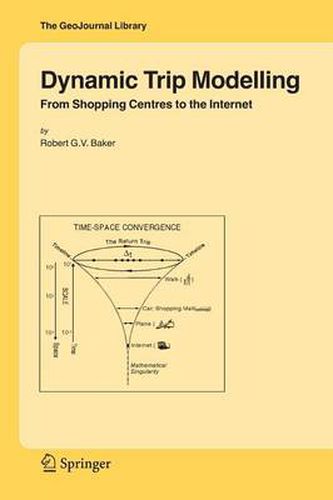Readings Newsletter
Become a Readings Member to make your shopping experience even easier.
Sign in or sign up for free!
You’re not far away from qualifying for FREE standard shipping within Australia
You’ve qualified for FREE standard shipping within Australia
The cart is loading…






This title is printed to order. This book may have been self-published. If so, we cannot guarantee the quality of the content. In the main most books will have gone through the editing process however some may not. We therefore suggest that you be aware of this before ordering this book. If in doubt check either the author or publisher’s details as we are unable to accept any returns unless they are faulty. Please contact us if you have any questions.
Walking from a parked car to a shop, driving to a planned or unplanned shopping centre and virtual exchanges through the Internet are all part of 21st century trips in human activity spaces. Can these diversified types of trips be linked in a common framework? In a bold and innovative analysis, the author shows how such a diversity of trips can be linked by a universal vision of spatial interaction modelling. He uses one special differential equation, describing exchanges between time lines, to model both real and virtual trips to shopping centres and through the Internet. These theoretical time lines are part of a time-space convergence, a concept that appeared in the time geography literature at the end of the 1960s. Whilst the spatial contexts are different, the process of time exchanges is the same for both real and virtual trips. It is shown how distance decay is fundamental to this type of interaction and is dependent on the time boundary defining the exchange. Time boundaries can be defined as the trading hours of shopping centres or by the rotation of the Earth. The startling conclusion is that distance does matter, not only in walking to shops, but in defining the movement of internet traffic.
$9.00 standard shipping within Australia
FREE standard shipping within Australia for orders over $100.00
Express & International shipping calculated at checkout
This title is printed to order. This book may have been self-published. If so, we cannot guarantee the quality of the content. In the main most books will have gone through the editing process however some may not. We therefore suggest that you be aware of this before ordering this book. If in doubt check either the author or publisher’s details as we are unable to accept any returns unless they are faulty. Please contact us if you have any questions.
Walking from a parked car to a shop, driving to a planned or unplanned shopping centre and virtual exchanges through the Internet are all part of 21st century trips in human activity spaces. Can these diversified types of trips be linked in a common framework? In a bold and innovative analysis, the author shows how such a diversity of trips can be linked by a universal vision of spatial interaction modelling. He uses one special differential equation, describing exchanges between time lines, to model both real and virtual trips to shopping centres and through the Internet. These theoretical time lines are part of a time-space convergence, a concept that appeared in the time geography literature at the end of the 1960s. Whilst the spatial contexts are different, the process of time exchanges is the same for both real and virtual trips. It is shown how distance decay is fundamental to this type of interaction and is dependent on the time boundary defining the exchange. Time boundaries can be defined as the trading hours of shopping centres or by the rotation of the Earth. The startling conclusion is that distance does matter, not only in walking to shops, but in defining the movement of internet traffic.